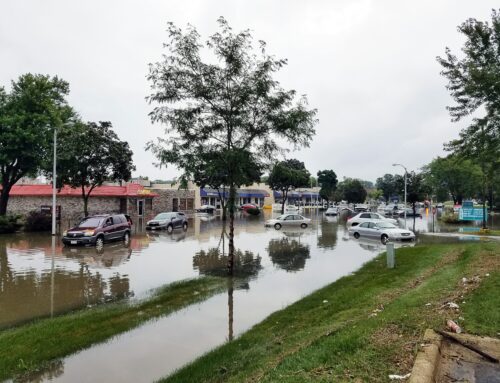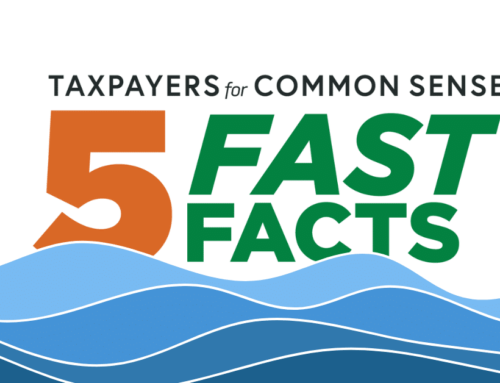Testimony of Steve Ellis
Vice President, Taxpayers for Common Sense
United States Senate Committee on Finance
Subcommittee on Taxation and IRS Oversight hearing
“Tax Relief after a Disaster: How Individuals, Small Businesses, and Communities Recover”
November 18, 2014
Good afternoon Chairman Casey, Ranking Member Enzi, members of the subcommittee. I am Steve Ellis, Vice President of Taxpayers for Common Sense, a national, nonpartisan budget watchdog group. I am very pleased that you invited me here today. TCS has been involved in national disaster policy since our inception nearly 20 years ago and I have been engaged in this issue since I was a young Coast Guard officer working on the policy response to the Great Midwest Flood of 1993.
I know the hearing today, and the committee’s jurisdiction, is on tax policy, but I want to stress that the nation has to reform its policies to take a holistic approach to disaster response and recovery that promotes resilience and pre-sponds to inevitable future disasters. That encompasses federal appropriations, tax expenditures, rules and regulations, loans and loan guarantees as well as local and state engagement. More generally on tax policy, Taxpayers for Common Sense strongly supports efforts to enact comprehensive tax reform, and we would be more interested in eliminating many of the tax expenditures rather than expanding them and creating new ones on an ad hoc basis.
Simply put, too much federal assistance – whether spending or revenue loss – goes out without a real plan in place and adequate demands to make communities and individuals more resilient. Every dime that is spent by the U.S. Treasury in disaster response should help ensure that another dime doesn’t have to be spent on the same thing in the future for another recovery. Unlike appropriated spending, however, tax credits, special depreciation schedules, and tax-exempt bonds are blunt instruments. They reward much reinvestment that would happen regardless and may create subsidies that are out of proportion to the losses incurred when other federal, state, and charitable programs are taken into account. The committee should regard tax solutions to natural disasters with skepticism.
As with other areas of the tax code, these disaster-related tax expenditures are hidden spending and deserve far more scrutiny than they have received. The Government Accountability Office has pointed out time and again that “… once enacted, tax expenditures and their relative contributions toward achieving federal missions and goals are often less visible than spending programs, which are subject to more systematic review.”
For instance, there is very little data available that documents who did what with the various tax preferences that were granted post-Katrina or other disasters. We don’t know if various provisions change behavior, increase resiliency, or help people rebuild. A subsidy is a policy tool to encourage behavior that would not otherwise occur. If people or businesses were already going to do the activity, well then, it was a waste. You can look at the post-9/11 Liberty Bonds to help promote development in downtown Manhattan. On September 12, 2001 it was not clear if re-development would occur. Within a few years, it was pretty clear that redevelopment was occurring and high value redevelopment at that. While unnecessary, the subsidies remained.
Similar problems occurred with the Gulf Opportunity (GO) Zone program, which was in part based on the Liberty Bonds and intended to promote development in areas devastated by Katrina, Rita, and Wilma. But again, much of the development didn’t occur in the areas hardest hit and went to areas less affected that presumably did not need the tax advantaged bonds to redevelop. As the GAO wrote this committee in 2008, “For the most part, all three eligible states allocated GO Zone tax-exempt private activity bond authority without consistently targeting the allocations to assist recovery in the most damaged areas.” Part of this was because of the first-come, first-served approach to allocating the support to a large diversified area that was comprised of rural and urban areas with large differences in relative affluence and impact from the storm. In some cases it may not make sense to redevelop certain vulnerable areas that were hit hard, but that should be a conscious part of the decision-making process that also incorporates how the redevelopment is being done, what structures are being constructed, and the level of protection and/or mitigation involved.
I am not aware of a GO Zone proposal for areas hit by Superstorm Sandy and Hurricane Irene, but there has been a push to extend or create provisions to increase tax advantages in disaster affected regions. These include proposals involving the New Markets Tax Credit (NMTC), charitable contributions, increased expensing and bonus depreciation, and use of tax-exempt retirement plan funds among others. Each of these provisions was part of earlier disaster recovery tax packages. All suffer from a lack of effective targeting to the greatest needs and each fails to promote greater resilience to future disasters.
The New Markets Tax Credit was created in 2000 to help spur development in low income communities by leveraging tax credits given to community development entities. There are proposals to increase the allocation to target these same communities specifically in disaster areas. The program itself has its detractors. In some cases the NMTC not only went to development that would have otherwise occurred but was upscale. In 2010, the GAO opined that a grant program would be more transparent and be more cost-effective. Just this summer the GAO indicated that the program needed increased controls and transparency. Beyond those criticisms, the program is not structured to promote targeted, more resilient development, which is what communities recovering from disaster need.
In the case of charitable contributions, individuals making contributions to charities for disaster relief efforts would be allowed to deduct more from their income than is currently allowed. There are bigger questions about the charitable deduction, but in this specific case, the federal government is saying those impacted by larger disasters are in effect, more important than those affected by smaller ones or those whose plight – such as a chronic disease – does not stem from a disaster. Finally, the government will be subsidizing contributions to these organizations without really knowing the activities the organizations would undertake or why.
Increased expensing and bonus depreciation for property purchased after a disaster to repair or replace property destroyed in the disaster is also a blunt instrument. We don’t know the condition of the earlier property or even if the assistance is necessary to facilitate the purchase. In addition, some taxpayers won’t even be able to take full advantage of the accelerated expensing or bonus depreciation if they don’t have the current and future income to write it off against.
Other ideas like penalty-free withdrawals from retirement accounts could make sense. But in general, these provisions haven’t been targeted or limited to disaster related activities. The taxpayer would have to live in the declared disaster area, have disaster-related damage, and would be limited on the total amount that could be withdrawn from the account, but what that money was spent on may or may not have anything to do with the disaster, rebuilding, or increasing resilience. Furthermore, this has the potential of turning a retirement plan into disaster insurance, which would be questionable policy from a retirement security perspective.
The nation’s approach to disasters needs to be reformed. Planning and investments before the inevitable disaster will make communities more resilient and will cost taxpayers less. The Sandy supplemental contained $15.2 billion in Department of Housing and Urban Development Community Development Block Grant disaster funding. That’s five times the program’s annual appropriation. The State of New Jersey’s annual CDBG spending is $7 million; the Sandy supplemental gave the State $4 billion in CDBG disaster recovery funds. The U.S. Army Corps of Engineers received $5 billion – equal to one fiscal year’s funding for the entire agency. Yet, this post-disaster funding flows slowly – less than a quarter of all funding had been outlaid by the end of August and less than 15 percent of the funding for CDBG and the Corps of Engineers.
The ad hoc response increases waste and reduces efficiency. The CDBG disaster program doesn’t have a standing authorization and is driven by a series of federal register notices. The Corps is using Sandy funding to complete a comprehensive plan for the affected states, but in the two year interim has been repairing or pushing to complete projects that rebuild more of the same instead of mitigating risk.
Disaster related tax provisions may have a place in response, but they – like the rest of the government’s disaster recovery – need to be targeted to promote resilience and reduce risk. Current law is ad hoc at best. “Free” post-disaster funding reduces the incentive to invest in pre-disaster efforts to mitigate damage and promote resilience. Communities accessing post- and pre- disaster funds should be required to submit, implement, and enforce resilience plans that take into account future conditions and include pre-disaster resilience and rebuilding stronger and safer after a storm. Programs like flood insurance need to be reformed. Responsibility needs to fall more on the states. There should be requirements promoting adequate building codes and insuring public infrastructure in the private marketplace. While protecting taxpayers, rigid rules regarding reconstruction should be flexible enough to encourage a more resilient recovery not simply rebuilding in-kind.
These are just a few ideas we have regarding disasters. I applaud you for conducting the oversight and for reviewing tax expenditures. I urge you to request the GAO report on how disaster related tax provisions have been implemented in the past and whether they have promoted a more resilient recovery. If you do enact disaster related tax provisions, I urge you to require the GAO to evaluate their implementation and resilience impact. Any federal spending – whether through the Treasury or through the tax code – should be evaluated to see whether it has the intended impact. Disaster recovery spending should be evaluated on whether communities emerge more resilient and less vulnerable to future disasters.
Again thank you for inviting me to testify here today and I’m happy to answer any questions you might have.











Get Social